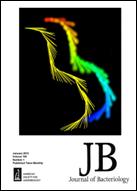学术海报:日本大阪市立大学Makoto Miyata(宫田真人)教授来我校作学术报告
应生命科学学院、江苏省水生甲壳动物病害重点实验室
时间:
地点:仙林校区北区生命科学学院三楼圆形会议室
题目:A novel motility, Mycoplasma gliding
欢迎全校师生参加。
报告者简介:
日本大阪市立大学理学研究部生物学科细胞机能研究室Makoto Miyata(宫田真人)教授是国际知名的支原体研究专家,从事肺炎支原体和滑动支原体的研究,1997年开始关注滑动支原体Mycoplasma mobile(一种寄生在鱼鳃上的病原体)的运动机制,发现了一种新的细胞运动机制,并经实验证实,生物体内利用和储存能量的核心物质三磷酸腺苷(ATP)能使已被杀灭的致病支原体“起死回生”。这一结果首次表明,原核生物可能也以ATP为运动能源,这篇报道发表在2005年PNAS(美国科学院学报)上,并且成为该期的封面文章。文章指出,如果能“切断”支原体的能源供应,就有可能更加安全有效地治疗支原体肺炎等疾病。Makoto Miyata教授的研究团队近年来利用多学科交叉的研究手段和技术(包括微生物学,分子生物学,生物化学,生物物理学,数学等)开展滑动支原体独特运动机制的研究,建立了揭示其运动机制的模型。到目前为止,与传统运动马达和细菌鞭毛等运动机制相比,支原体的滑动机制阐述得最为清楚,这些成果分别发表在Journal of Bacteriology、Annual Review of Microbiology、Trends in Microbiolog、Proceedings of the National Academy of Sciences of the United States of America(PNAS)、Cell Motility等国际知名期刊和书籍,在国际细菌和细胞运动研究领域有重要的学术地位和影响。
l Makoto Miyata教授实验室网站:http://www.sci.osaka-cu.ac.jp/~miyata/myco1.htm
l Publication list:http://www.sci.osaka-cu.ac.jp/~miyata/achieves/achieve2.htm
江苏省水生甲壳动物病害重点实验室
学术报告题目和摘要
A novel motility, Mycoplasma gliding
Makoto Miyata
Department of Biology,
Mycoplasma pneumonia, epidemic over the world in this winter is caused by Mycoplasma pneumoniae. Mycoplasma is a group of pathogenic bacteria which form membrane protrusion at a cell pole. They bind to solid surfaces including animal cells and glass with the protrusion, and glide. Although the gliding is fast and smooth, the mechanism is not related to the known bacterial motility systems such as flagella pili, or conventional motor proteins such as myosin.
We have studied mainly on the fastest species, Mycoplasma mobile, which glides with 4 micron per s, i.e. 6 times of cell length on glass, focusing on the following subjects: (i) Gliding machinery including supporting structure, (ii) Component proteins of machinery, (iii) Measurements of force, wobble and steps, (iv) Direct energy source and its coupling to cycle, and (v) Binding target as the rail on solid surface. Based on these observations, we proposed a working model. The gliding machinery is composed of four huge proteins at the base of membrane protrusion and supported by a cytoskeletal architecture from the cell inside. Many flexible legs about 50 nm long are sticking out from the machinery. The movements generated by ATP hydrolysis inside cell transmits to leg protein through crank protein, resulting in the repeated catching, pulling, and releasing of the sialic acids fixed on the surface by the legs.
研究经历
History
Mycoplasma, a group of pathogenic bacteria is known as a cause of human pneumonia which is epidemic over the world in this winter. Mycoplasmas form a membrane protrusion at a pole and glide on the host cell surface by a unique mechanism. Although the gliding motility is involved in parasitism, its mechanism had not been studied until 1997.
Prof. Miyata started to study Mycoplasma gliding, mainly focusing on the fastest species, Mycoplasma mobile. Miyata and his collaborators incorporated many view points to their study, including, microbiology, molecular biology, biochemistry, biophysics, mathematics etc, and then provided a working model to explain the mechanism. Now, Mycoplasma gliding is one of the most well elucidated motility other than conventional motor proteins and bacterial flagella.

References(近几年发表的部分论文)
1. Nakane D and Miyata M (2012) Mycoplasma mobile cells elongated by detergent and their pivoting movements in gliding. Journal of Bacteriology. 194, 122
版权与免责声明:本网页的内容由收集互联网上公开发布的信息整理获得。目的在于传递信息及分享,并不意味着赞同其观点或证实其真实性,也不构成其他建议。仅提供交流平台,不为其版权负责。如涉及侵权,请联系我们及时修改或删除。邮箱:sales@allpeptide.com